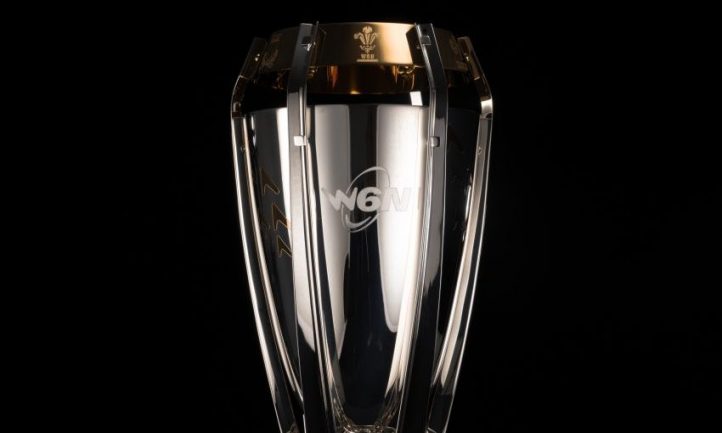The conclusion of the men’s Guinness Six Nation’s tournament used to signal the end of the Northern Hemisphere’s winter international season. Now it serves as block-busting precursor to a women’s competition that grows in stature year-after-year.

Photo: Thomas Lyte
Thomas Lyte, the Royal silversmiths and goldsmiths, are at the heart of a tournament that boasts a trophy befitting the competition’s place in rugby’s new world order. Unveiled in front of a packed Twickenham at the end of the 2023 competition, the new Women’s Six Nations Trophy, designed and made by Thomas Lyte, has quickly established itself at the beating heart of the women’s game.
For the company itself, it represents the extension of a lengthy association with the tournament, with Thomas Lyte having made the original trophy for the women’s competition back in 2008. The new trophy, like its predecessor, joins an illustrious list of sporting silverware designed and made in our London workshop. Not least the Emirates FA Cup, the ICC Test World Championship Mace, the Guinness Six Nations trophy and the Women’s Rugby World Cup.
First lifted by England – much to the joy of those crammed into the home of English rugby – the trophy’s striking design is a fusion of past, present and future. And provides an illustration of the direction of travel enjoyed by women’s rugby, not just in Europe but around the world.
Lovingly hand-crafted across 250 hours, the trophy boasts a number of distinctive features. These include six arms reaching up to surround the cup, with each representing one of the nations that compete in the tournament, namely Wales, Ireland, Italy, France, Scotland and England. Modern in design, combined with a classical silhouette, the trophy signifies the strength, energy and ambition of women’s rugby.
But you can’t have a rugby trophy without an element of practicality. Which is why the Cup – which is adorned with the Six Nations tournament logo – is plated with gilt on its inside, a traditional technique and that applies a layer of gold to create a pure surface for drinking from. An essential element for any celebrating side once the competition concludes in the final week of April.

Photo: Thomas Lyte
It’s a fitting prize for a tournament that has grown enormously since its inception in 1996. With matches regularly played in front of sell-out crowds, the Women’s Six Nations illustrates how far the sport has come in a relatively short space of time. The trophy itself is the embodiment of both the progress it has made and everything the Women’s Six Nations has to look forward to in the future.
By the time the winners are crowned, the intricacies of trophy design and creation are unlikely to be running high on the agenda of the side crowned as champions. But it’s worth reflecting on the care and expertise that has gone into creating this modern classic, with Thomas Lyte successfully managing to combine age-old techniques with the very latest in modern technology.
Trophies like the Women’s Six Nations aren’t created very often, and when they are, there’s no manual to refer to, no step-by-step guide. Which is where our expert craftspeople come into their own. The trophy may end as a 75cm-tall piece of silverware, but it begins life as a flat sheet of metal – a blank canvas for some of the most brilliant minds in our industry.
Bringing it to life is one of the most thrilling elements of our job. Utilising processes such as spinning, casting, hot forging, filing, polishing, plating, engraving, and assembling, and also cutting-edge 3D printing and electroforming, the trophy gradually begins to take shape. Our quality team then ensure the trophy is in perfect condition before it eventually leaves our workshop to watch-on as six teams give their all to bring it home.

Photo: Thomas Lyte
“Thomas Lyte are hugely proud of our work in supporting women’s sport,” says Andrew Jones, Business Development Director at Thomas Lyte. “We have recently designed and made four trophies for top level football in Scotland and the Women’s Six Nations Trophy is an extension of our commitment to ensuring that support continues. To see the trophy lifted for the first time at Twickenham was a moment that will stay with us for a long time. We know the work that goes into creating these trophies – and to know that we have played some part in the growth of the women’s Six Nations is something we’re all hugely excited about.”
As ‘Super Saturday’ and the final three matches of the 2024 tournament get ever nearer, the trophy is ready to be handed over once more. Its place in the global rugby calendar now firmly established.
Courtesy of Thomas Lyte, designers and makers of the Women’s Six Nations Trophy









